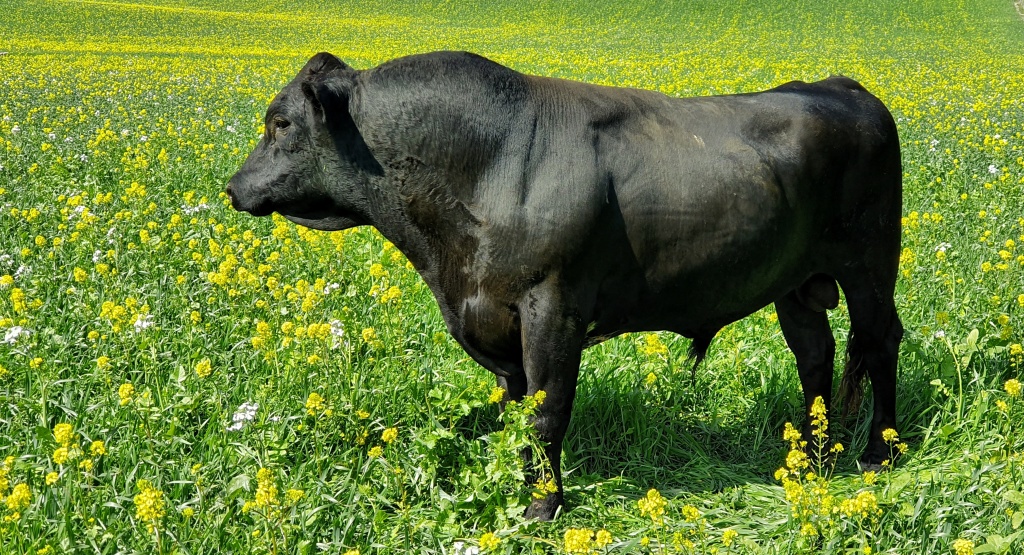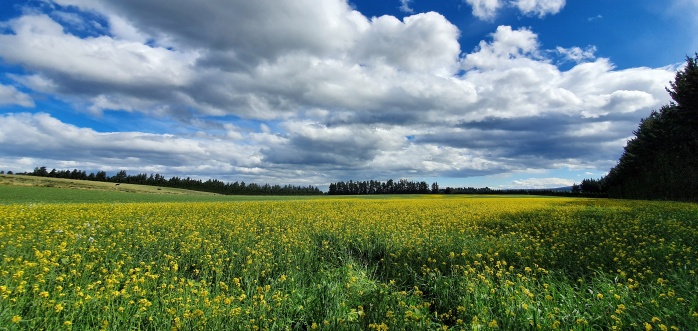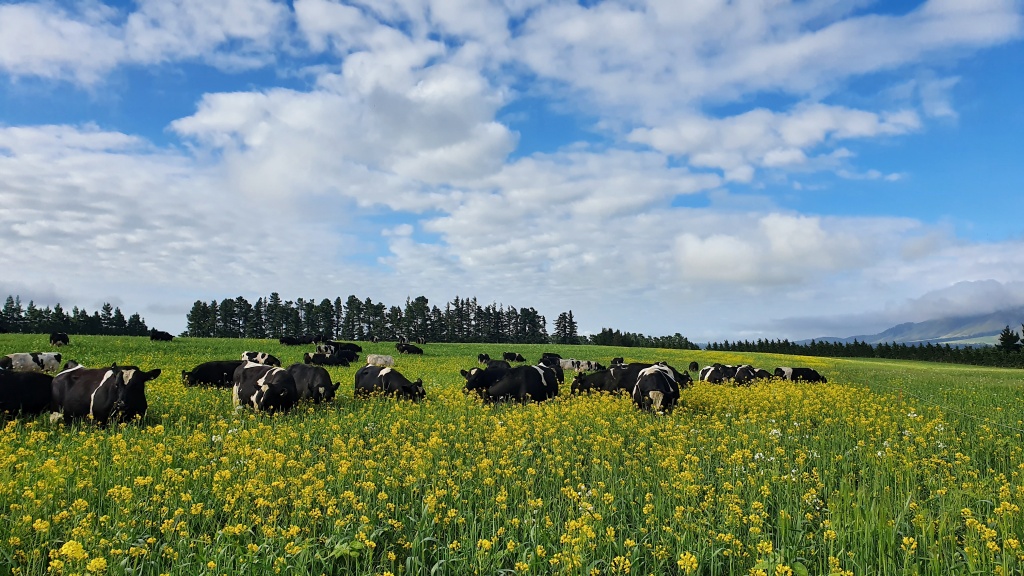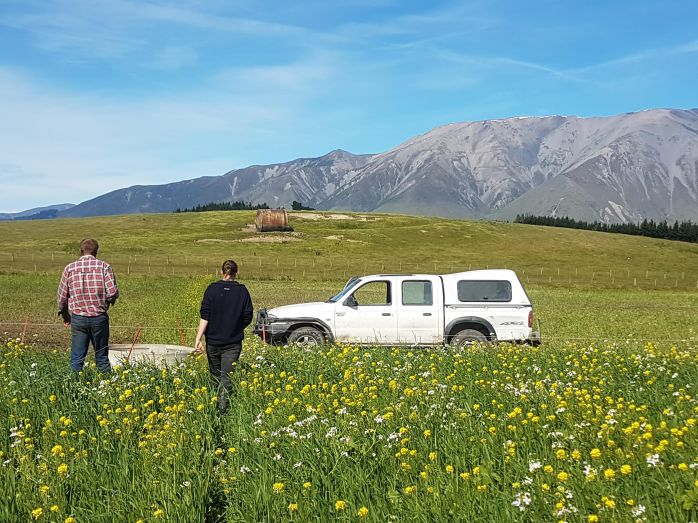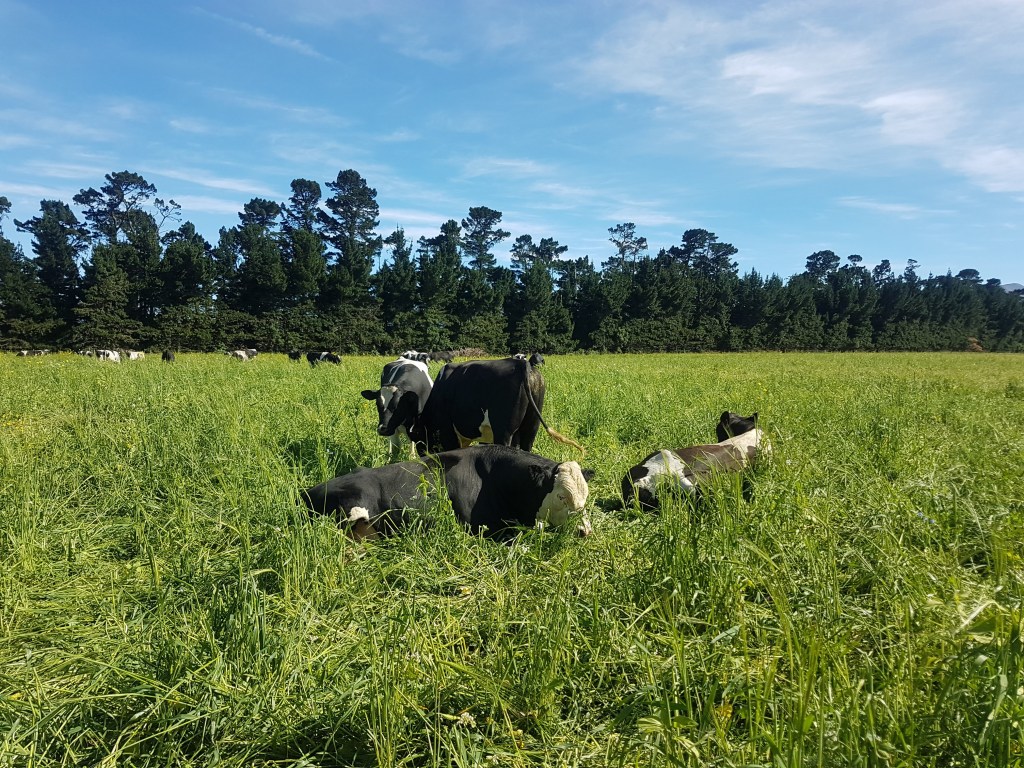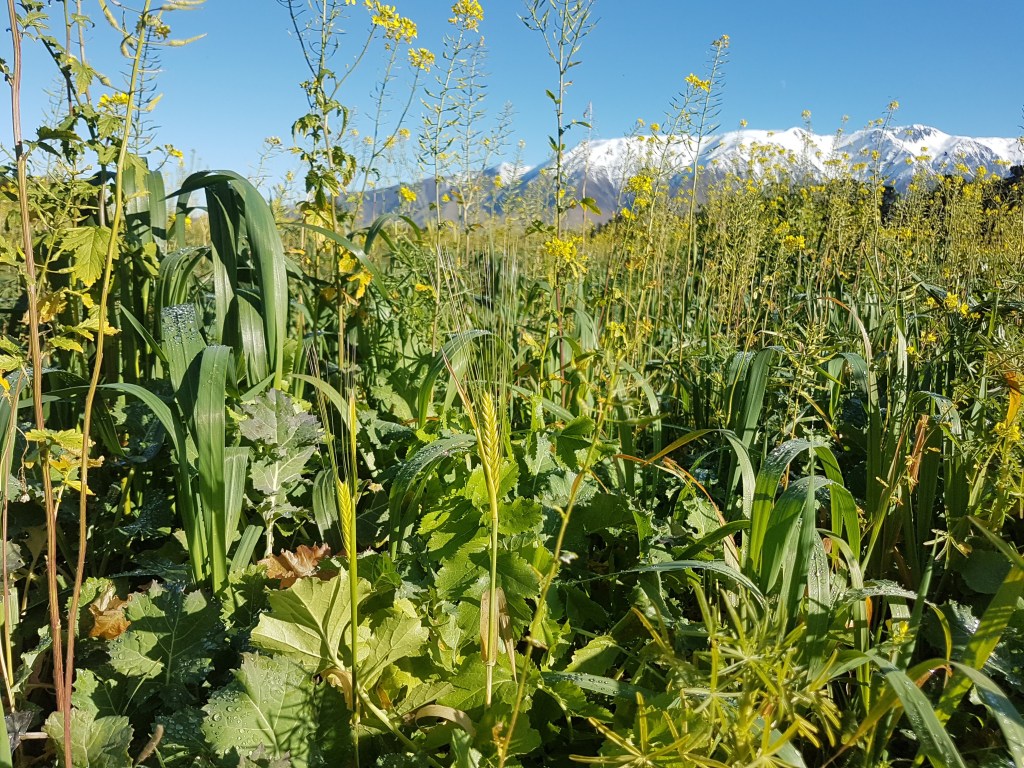benlea.co.nz
Farm tours and accommodation on a working farm
Regenerative Agriculture
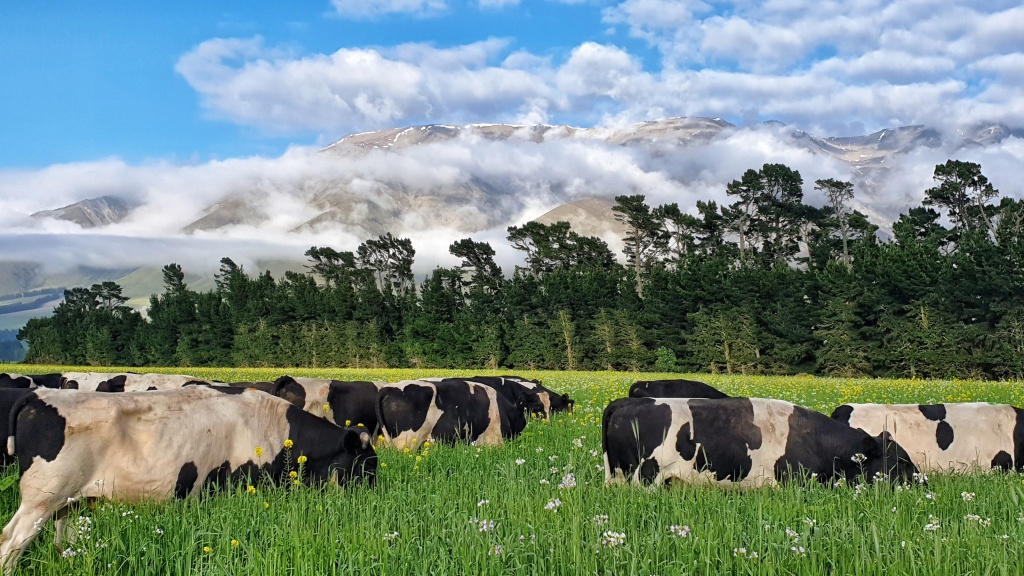
What is Regenerative Agriculture?
The benefits:
- Sequesters/pulls down large amounts of excess carbon from the atmosphere
- Enables farmers to produce meat/crops that are carbon neutral or even carbon negative!
- Dramatically increases water holding capacity of soil
- Grows pastures that are more drought resistant
- Improves soil and animal health
- Increases nutrient density of the food we eat
- Significantly improves biodiversity of the land
- Largely reduces our reliance on chemicals and synthetic fertilisers
- Increases the live stock holding capacity of the land
- Enables us to look at our land as an ecosystem rather than a production line
- Decreases water and top soil run off
- Grows the level and fertility of the top soil
Regenerative Agriculture in a “nutshell”:
Regenerative agriculture flips everything we know about farming on its head. Best practice (industry driven approach) teaches us to focus on our animals and crop yields. Regenerative agriculture focuses on our largest, and arguably most neglected resource on the planet: our soil.
It focuses on building everything quite literally from the ground up. Healthy soil with high levels of organic matter are the foundations for a sustainable farm. If we deplete all the soil nutrients, more and more inputs are required to achieve a healthy crop or animal. As the inputs continue upwards, farm health and profits spiral downwards.
Regenerative agriculture works to actually build the top soil itself. Soil is the second largest carbon sink on the planet, after the oceans. Growing the amount of organic matter in your soil enormously increases the amount of excess carbon absorbed from the atmosphere annually. It has been proven that by growing organic matter to a certain amount can sequester enough carbon to make the meat/crops of that farm, not only carbon neutral but even carbon negative.
Weeds, pests and unfavourable animal health are all symptoms which come from a lack of biodiversity and unbalanced soil. Regenerating the soil allows the land to restore naturally instead of having to prop it up with synthetic fertilisers and chemicals until it can no longer produce.
This way of farming has created a pathway for working with nature, rather than trying to control it. Consumers can feel good knowing that the produce they are buying is not only sustainable for the land but is actually improving it.

How is Regenerative Agriculture achieved?
Regenerative agriculture focuses on putting as much life and diversity as it possibly can back into the land. As farm health restores, we can gradually reduce our reliance on synthetic fertiliser and chemical inputs.
This is achieved through carefully planned grazing with high livestock numbers. Animals are moved quickly to leave feed behind on the pastures. Diverse crops of 15 or more plant species are grown. Animals are able to self medicate and choose the plants that their bodies need.
Few species on earth are designed to eat only a few things, yet for many years industry “best practice” has taught us that growing rye grass and clover should be all our animals require. If this was correct, we wouldn’t be spending thousands on animal health products.
Species are planted strategically based on what issues the soil has. Species can be planted to improve nitrogen fixation, release calcium, improve soil aeration, reduce soil compaction, increase water holding capacity and much more.
Diverse cover crops are planted in paddocks with soil issues. Animals are managed to eat 50% and trample 50% of their feed into the soil. This is required to kickstart soil biology and provide soil ‘armour’. If we don’t trample coverage over the soil, weeds grow to protect it instead.
Diverse plant species attract bird and insect species which work to control pests. This enables a healthy crop to be produced without large usage of pesticides and chemicals.
When the soil has improved, the paddock is sewn with a permanent pasture of diverse plants. Animals will continue to leave behind 50% of their feed. This ensures the pasture maintains a stronger, deeper root system that produces significantly more food, with a far superior water holding capacity.
Because the animals are eating many different species, (sometimes as many as 100 plants in a season), this hugely increases the nutrient density of the animal meaning the consumers are also eating food that is far more nutritious.

Principles of Regenerative Ag:
- Keep a living root in the ground for as long as possible
- Integrated animals in a high density rotational grazing system, moving quickly with long recovery periods.
- Soil armour – keep soil covered at all times
- Diversity – grow multi-species crops and pastures for both your soil and animal health
- Limit disturbance of pastures – including tillage, use of chemicals and synthetic fertilisers

Mind blowing Regenerative Ag facts:
- Meat from an animal raised on a regenerative farm contributes to the sequestering of carbon from the atmosphere – your food footprint is carbon NEGATIVE
- Top soil is the second largest carbon sink on the planet after the ocean
- A 1% increase in soil organic matter increases water holding capacity by 170,000 LITRES per hectare
- Cutting carbon emissions by 100% tomorrow would still require another 200 years to return to 1975 levels. We can only remove the excess carbon quickly by storing it back in our soils. This is only achieved through building organic matter
How are we implementing it on our farm?
Growing diverse cover crops:
One of our biggest focuses is converting our pastures over to a regenerative system which means growing many different species.
We are slowly converting paddocks over to this system to ensure we ease our way in. Our policy is once we have converted a paddock over to growing diverse species – it will not go back to traditional monoculture paddocks.
Growing diverse species we have noticed that the animals really enjoy the pasture. They gain weight well on them and over a dry summer these pastures were the last to start losing any condition in their quality.
Example of one of our mixes for a diverse cover crop*:
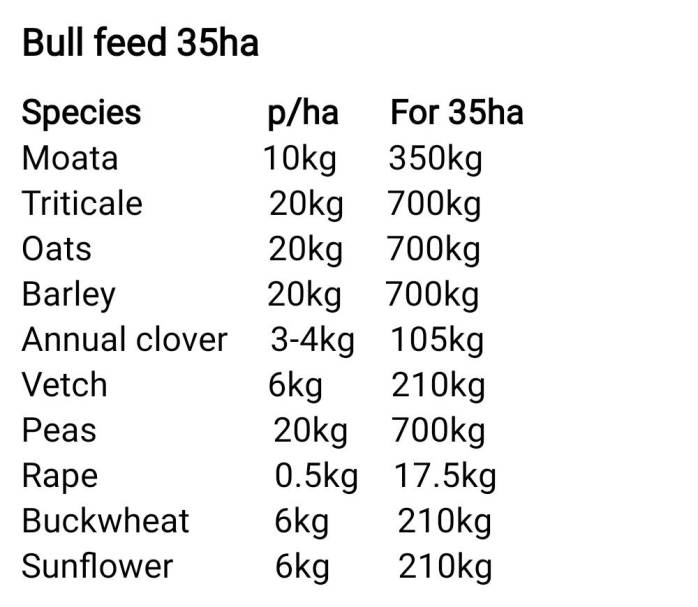

Resulting pasture from the above mix!
*Please note: every farm is different and the mix is not a recommendation for all farms. Every farmer will need to work out what species grow well on their land and what soil issues they need to address with their plants.
Rotational cell grazing of cattle:
All of our cattle paddocks are broken up with temporary electric fences into cells approximately 0.8 hectares each. At full pasture recovery this is enough to feed 40-50 cattle for the day.
The cattle are shifted every day. The aim is for the animals to only remove the tops of the plants and then move them onto the next cell. This means we aim to leave behind 70% of the feed and no less than 50%. Overgrazing is still a big issue of ours that we’re working on!
All of the nutritional value of the plant is in the first bite. This is the part of the plant that gets the most sunlight and converts the most energy for the animal to use.
Taking no more than 50% of the plant is really important for drought resistance and enabling your soil and root structure to maintain moisture. If the animal takes more than this then it begins to significantly impact the recovery time for that plant and we would grow a lot less pasture in a season.
Multi-species winter feed:
In the past we have traditionally grown winter crops of 1 or maybe 2 species such as kale, turnips and swedes.
We’ve found that our animals naturally get really sick of eating the same plant all winter and by the end of the season start leaving the plant behind, not wanting to eat it.
We also in the past have planted just enough feed to get through winter, meaning that the ground is left bare as we break feed the animals across the winter crop. This leaves the top soil with no protection; exposes it to the elements and makes it vulnerable to soil compaction by the animals.
This year we have grown winter crops of multiple species, one of our examples you can read below:

Please note: This is our own mix that we have grown to suit our property. It is up to every individual property to work out what plants suit their land and climate the best.
Transition to bio-fertilisers:
We have definitely used our fair share of synthetic fertilisers and chemicals over the years. Over time these products definitely degrade the quality of our soil and the feed our animals our eating.
We have adopted the use of biological fertilisers such as seaweed, molasses, fish fertiliser…..
We have significantly dropped our use of urea (synthetic nitrogen) to minimal amounts i.e. 5-10kg per hectare when in the past we used to put much higher amounts i.e.100kg pHa for animal pastures
We have significantly changed our use of glyphosate. Glyphosate prevents plants from taking the minerals they require in the soil which is why the sprays kill the plants. Glyphosate also remains in the soil for a minimum of 11 years which affects the nutrient uptake of the plants growing in the soil for that period of time. This means the food we are eating contain less nutrients.
We have reduced glyphosate damage by pairing it with fulvic acid. It increases the uptake by the plants and speeds up the breakdown time in the soil. Fulvic acid reduces the amount of glyphosate required by 50%. Adding citrus acid reduces the herbicide requirement by 30%!
Reduction of pesticides, herbicides and fungicides:
We have significantly reduced our use of pesticides and herbicides, instead planting crops of diverse species as a method of controlling and reducing pest species.
Diverse plant species have attracted more bird and insect life to the soil which we have noticed has resulted in a lot less weed and insect pest pressure.
In diversity crops where weeds have grown, we have stopped trying to spray out weeds, recognising that they have a part to play protecting the soil and contributing to the soil biology. Spraying them with chemicals kills soil biology.
Soil testing and observations:
The way to see changes over the years is obviously to record them. The best way to do this is to start digging holes to see how healthy your soil really is.
We make note of; soil compaction, pest species, earth worm counts, and whether the soil sticks to the plant roots.
We invested in a refractometer which indicates the energy levels of your plants and can explain why our animals are/aren’t enjoying their food.
We still have a lot to do in this area and aim to improve recording our results over time.
What we have noticed from our efforts so far:
- Our animals enjoy their food more
- Both lambs and cattle have performed well on diverse feed
- Our diverse pastures produce much higher sugar level readings
- Our diverse pastures are less affected by drier weather
- The diverse pastures have less insect pressure
- The bulls are far less destructive on a rotational grazing system
- The soil of the diverse pastures was more aerated than old pasture paddocks that had been over grazed and compacted by animals

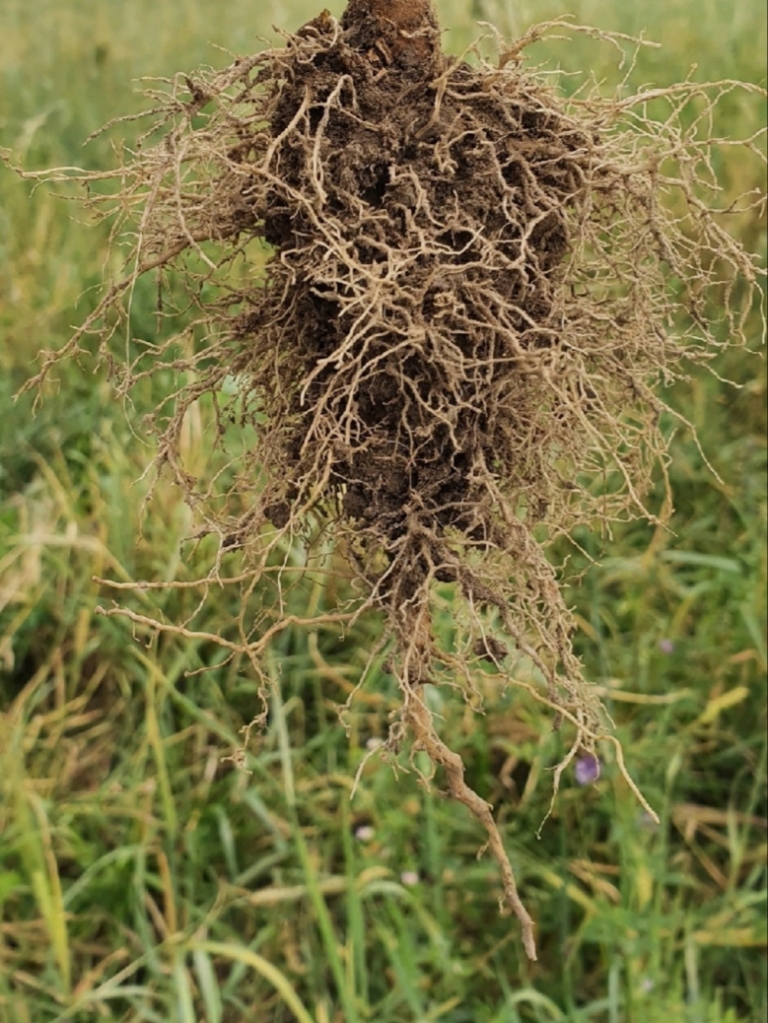
How you can learn about it yourself:
These are the resources we have used to get ourselves into regenerative agriculture. We have not been paid to place these on our website. We feel these are incredible, well backed resources that demonstrate mind-blowing results from all over the world as a result of many many years of research and hard work by the experts behind this movement.
Everyone has a different form of media that they prefer to get their information from, so we’ve provided a variety of different places and forms of social media. Learn about regenerative agriculture in the way that best suits you!
To the farmers:
For any farmer who is interested in regenerative agriculture – we recommend to start with the book that began our own journey: Dirt to Soil by Gabe Brown.
Books:
- For the love of soil – Nicole Masters
- Dirt to Soil – Gabe Brown
- Defending Beef – Nicole Hahn Niman
- Kiss the Ground – Josh Tickell
- Cows Save the Planet – Judith Schwartz
Youtube Videos:
- Ted talk: How to green the world’s deserts and reverse climate change – Alan Savoury
- From the ground up – regenerative farming in Australia
- Farming sustainably
- Kiss the Ground
Websites:
- Gabe Brown – the godfather of regernative agriculture in the U.S – has inspired thousands into their own journey
- Nicole Masters – a world renown agroecologist from New Zealand
- Calm the Farm – helping NZ farmers transition to regenerative agriculture
- Allan Savoury – creator of the holistic grazing system that has turned millions of acres of desert worldwide back into fertile land
- Graeme Sait – Australian agro-ecologist
- Grant Sims – Australian crop farmer acheiving incredible work with his farm
- Peter Barrett – Linnburn Station – New Zealand farmer achieving great things in his conversion to regenerative agriculture
- Christine Jones – a top Australian soil ecologist
- White Oak pastures – award winning US ranch. Analysed by the same company that measured the carbon output of Impossible Burgers proving regenerative agriculture sequestered carbon
Courses in regenerative agriculture:
Businesses working with Regenerative Agriculture
Regenerative Farms in New Zealand:
- Peter Barrett – Linnburn Station – New Zealand farmer achieving great things in his conversion to regenerative agriculture
- Mangarara Station – Hawke’s Bay
- Ellis Creek Farm – Golden bay
- Durham Farms
Instagram accounts focused on regenerative agriculture:
- Sustainable Dish
- Strong Sistas
- Kiss the Ground
- Savoury Institute
- The Point Station
Facebook Pages:

